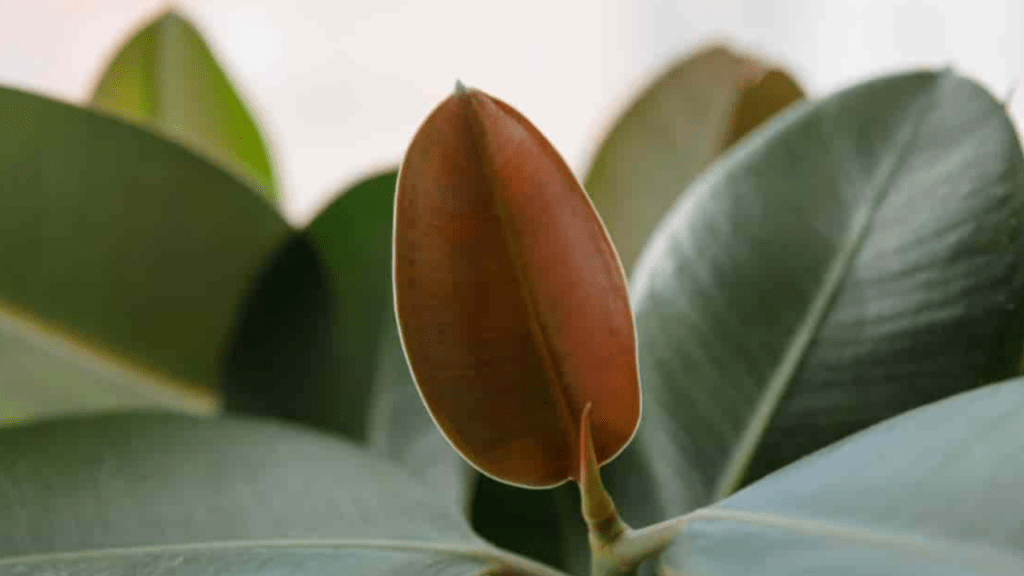
Rubber Tree Leaves Falling Off: Common Causes and Solutions
Rubber tree leaves falling off can be a concerning issue for plant owners, especially when these hardy plants typically thrive indoors. Whether it’s a few leaves here and there or a more severe loss, understanding the reasons behind this phenomenon is essential for maintaining a healthy rubber tree. In this article, we’ll delve into the common causes of leaf drop in rubber trees, provide preventative measures, and offer remedies to restore your plant to its full, vibrant self.
Table of Contents
ToggleUnderstanding the Rubber Tree
Brief Overview of the Rubber Tree (Ficus elastica): Explain the basic characteristics and care requirements of the rubber tree.
The Rubber Tree, also known as Ficus elastica, is a popular and low-maintenance houseplant known for its large, glossy leaves and air-purifying properties. This tropical plant thrives in bright, indirect light and prefers consistent watering to keep its soil evenly moist. It’s important to avoid overwatering, as this can lead to root rot and ultimately cause leaf drop. Rubber trees also benefit from regular misting to increase humidity and prevent dry, crispy leaves.
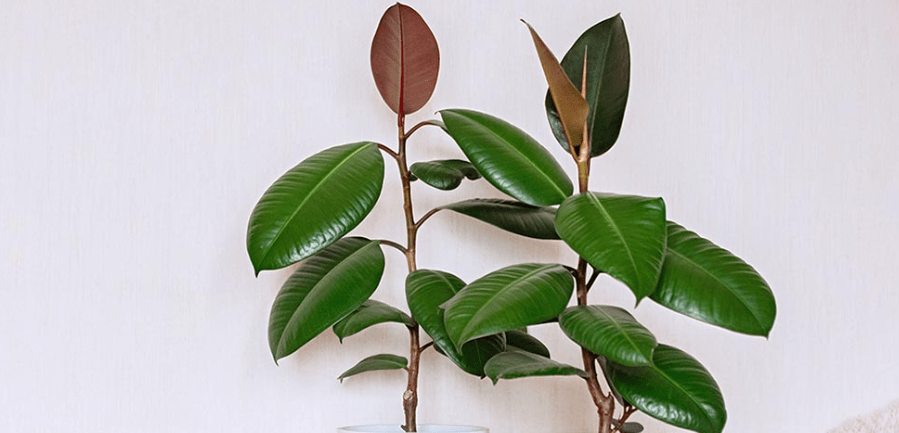
Common Causes of Leaf Drop
There are several common reasons why rubber tree leaves may start falling off. Overwatering, underwatering, sudden changes in temperature or light, and pests such as spider mites or mealybugs can all contribute to leaf drop. It’s important to assess the conditions in which the plant is kept and address any potential issues to prevent further leaf loss.
Preventative Measures and Solutions
To prevent leaf drop, it’s important to maintain consistent care and address any potential issues promptly. This includes adjusting watering practices, ensuring the plant is in an optimal environment with stable temperature and light conditions, and regularly inspecting for pests. If leaf drop has already occurred, it’s important to take action by adjusting care practices, treating for pests if necessary, and providing a suitable environment for the plant to recover.
In conclusion, understanding the basic characteristics and care requirements of the Rubber Tree, as well as being aware of the common causes and solutions for leaf drop, is essential for maintaining a healthy and vibrant plant. With the right care and attention, your rubber tree can thrive and continue to bring natural beauty to your indoor space.
Common Causes of Rubber Tree Leaves Falling Off
Overwatering:
Explain how too much water can lead to root rot and stress, causing leaves to drop.
When it comes to caring for a rubber tree, overwatering can be a common cause of leaf drop. Too much water can lead to root rot and stress, which in turn can cause the leaves to drop. It’s important to assess the moisture levels in the soil and adjust your watering practices accordingly. Make sure the soil is allowed to partially dry out between waterings to prevent overwatering. This will help maintain healthy roots and prevent stress on the plant, ultimately reducing the likelihood of leaf drop. Additionally, be mindful of sudden changes in temperature or light, as well as pests such as spider mites or mealybugs, as these factors can also contribute to leaf drop. By addressing these potential issues and maintaining consistent care, you can help prevent and address leaf drop in your rubber tree.
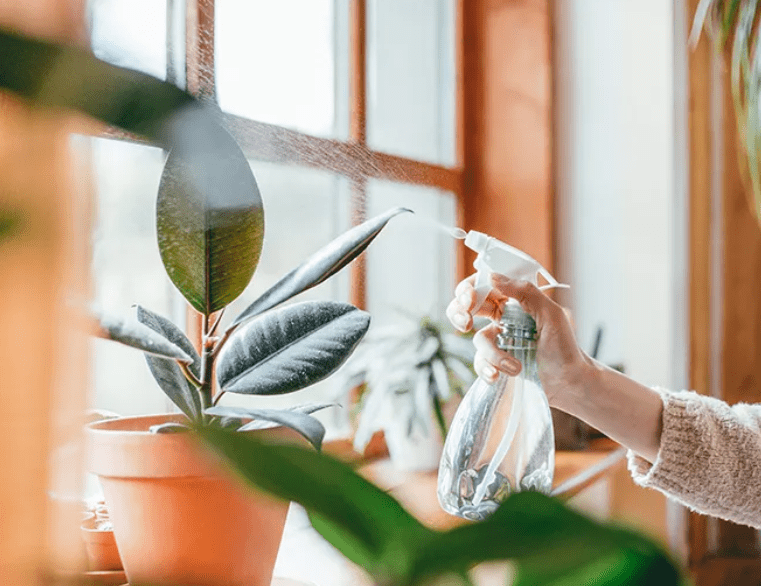
Underwatering:
Describe how lack of water leads to dehydration and leaf drop.
When a rubber tree doesn’t receive enough water, it can lead to dehydration and ultimately cause the leaves to drop. Dehydration occurs when the plant doesn’t have enough water to carry out essential processes like photosynthesis and nutrient transport. As a result, the leaves may start to wilt, turn yellow, and eventually drop off. It’s important to make sure the rubber tree is receiving adequate water to prevent dehydration and leaf drop. Checking the moisture level of the soil and watering the plant when the top inch of soil feels dry can help maintain proper hydration for the rubber tree. Additionally, maintaining a consistent watering schedule and keeping an eye on environmental factors like humidity levels can also help prevent dehydration and leaf drop.
Lack of Light:
Discuss the importance of adequate light and how insufficient light causes leaves to fall.
A lack of adequate light can also cause leaves to fall from a rubber tree. Without enough light, the plant may not be able to carry out photosynthesis effectively, which can lead to a decrease in overall health and vitality. As a result, the leaves may start to yellow and eventually drop off. It’s important to place the rubber tree in a location where it can receive bright, indirect light for several hours each day. If natural light is not sufficient, supplemental grow lights can be used to provide the necessary light levels for the plant. By ensuring that the rubber tree receives adequate light, you can help prevent leaf drop and maintain the overall health and appearance of the plant.
Temperature Fluctuations:
Explain how sudden temperature changes or exposure to drafts can stress the plant.
Pests and Diseases:
Identify common pests (like spider mites) and diseases that affect rubber trees.
Rubber trees can be affected by a variety of pests and diseases that can impact their health and overall growth. One common pest that can affect rubber trees is spider mites. These tiny pests can cause damage to the leaves of the rubber tree by feeding on the plant’s sap, leading to discoloration and damage. To prevent spider mites, it’s important to regularly inspect your rubber tree for any signs of infestation and to take appropriate measures to control and eradicate the pests.
In addition to pests, rubber trees can also be susceptible to diseases such as leaf spot and root rot. Leaf spot is a fungal disease that can cause dark, water-soaked spots on the leaves of the rubber tree, leading to leaf drop and overall decline in plant health. Root rot, on the other hand, is a common issue caused by overwatering and poor drainage, leading to root damage and eventual death of the plant.
To prevent and manage these pests and diseases, it’s important to regularly inspect your rubber tree for any signs of infestation or disease. Proper watering, good air circulation, and regular cleaning of the plant can help prevent the occurrence of these pests and diseases. If you notice any issues with your rubber tree, it’s important to take prompt action to address the problem and ensure the health and vitality of your plant.
Transplant Shock:
Discuss how repotting or moving the plant can cause temporary leaf drop.
When you repot or move a plant, it can cause temporary leaf drop. This is a common response to the stress of being uprooted and placed in a new environment. The plant needs time to adjust to its new surroundings, and during this adjustment period, it may shed some of its leaves. This is a normal process and the plant will often start to produce new leaves once it has acclimated to its new pot or location. It’s important to be patient and continue to care for the plant during this time, providing it with the necessary water, sunlight, and nutrients to support its recovery. With proper care, the plant should bounce back and begin to thrive in its new environment.
Nutrient Deficiency:
Explain how lack of essential nutrients can weaken the plant and cause leaves to drop.
When a plant lacks essential nutrients, it can weaken and cause leaves to drop. Nutrient deficiency can occur when the plant does not receive the necessary nutrients it needs to thrive, such as nitrogen, potassium, or magnesium. This can cause the plant to become weak and more susceptible to stress, leading to leaf drop. It’s important to ensure that the plant is receiving the proper fertilization and soil nutrients to support its growth and health. Additionally, it’s important to monitor for any signs of nutrient deficiencies, such as yellowing or browning of leaves, and address them promptly to prevent further leaf drop and promote the overall health of the plant.
Solutions to Prevent Rubber Tree Leaves Falling Off
Proper Watering Techniques:
Detailed guide on how to water your rubber tree correctly, including tips on soil moisture levels.
Proper watering is essential for the health of your rubber tree. It’s important to water your plant consistently, but not excessively. Overwatering can lead to root rot and other issues, while underwatering can cause the leaves to droop and fall off. To water your rubber tree correctly, it’s important to check the moisture levels of the soil. You can do this by sticking your finger into the soil up to the second knuckle. If the soil feels dry at that level, it’s time to water. However, if the soil feels moist, wait a few more days before watering again. It’s also important to ensure that your rubber tree is planted in well-draining soil to prevent waterlogging. By following these watering tips, you can help your rubber tree thrive and prevent leaf drop.
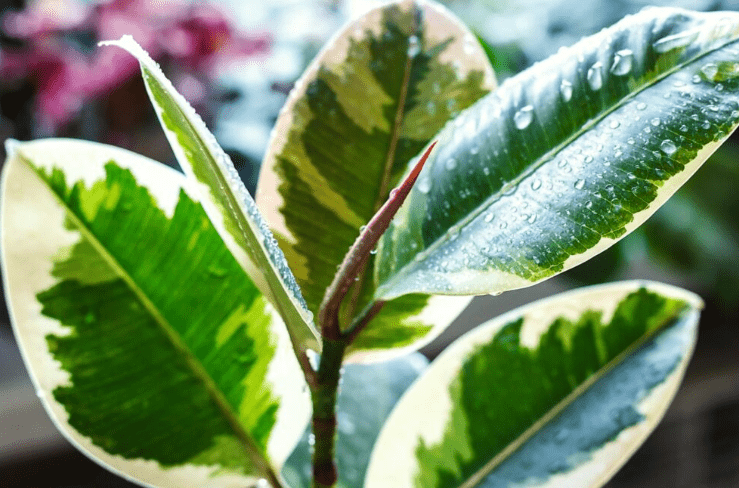
Ensuring Adequate Light:
Tips on positioning your rubber tree for optimal light exposure.
Positioning your rubber tree in the right spot for optimal light exposure is crucial for its health and growth. Rubber trees thrive in bright, indirect light, so it’s important to place them near a window that receives plenty of sunlight throughout the day. However, direct sunlight can scorch the leaves, so it’s best to avoid placing them in direct sunlight for extended periods of time. If you notice that the leaves are turning yellow or brown, it may be a sign that the plant is receiving too much direct sunlight.
On the other hand, if your rubber tree is not receiving enough light, it may become leggy and lose its vibrant green color. To prevent this, consider placing your rubber tree near a window with bright, indirect light and rotating it occasionally to ensure even light exposure on all sides of the plant. If you notice that the leaves are leaning towards the light source, it may be a sign that the plant is not receiving enough light and needs to be repositioned.
By following these tips on light exposure, you can help your rubber tree thrive and maintain its lush, green foliage.
Maintaining Stable Temperatures:
Advice on keeping your rubber tree in a stable environment.
Rubber trees thrive in a stable environment, so it’s important to keep them in a location with consistent temperature and humidity levels. It’s best to keep your rubber tree in a room with temperatures between 60-80 degrees Fahrenheit. Avoid placing the plant near drafts or heating vents, as sudden temperature changes can stress the plant. Additionally, rubber trees prefer higher humidity levels, so if you live in a dry climate, consider using a humidifier or misting the leaves regularly to increase humidity around the plant. By maintaining a stable environment for your rubber tree, you can help promote healthy growth and keep the plant thriving.
Pest and Disease Management:
Natural and chemical solutions to manage pests and diseases.
When it comes to managing pests and diseases on your plants, there are both natural and chemical solutions available. Natural solutions include using beneficial insects, such as ladybugs or lacewings, to control pest populations. You can also use neem oil or insecticidal soaps to effectively manage pests without the use of harsh chemicals. For diseases, natural solutions include using compost tea or a mixture of baking soda and water to prevent and control fungal infections. On the other hand, chemical solutions such as pesticides and fungicides can also be effective in managing pests and diseases, but it’s important to use them carefully and according to the instructions on the label to avoid harming the plant or the environment. Ultimately, the choice between natural and chemical solutions depends on your individual preferences and the specific needs of your plants. Always remember to consider the potential impact on the environment and beneficial insects when choosing a pest and disease management solution.
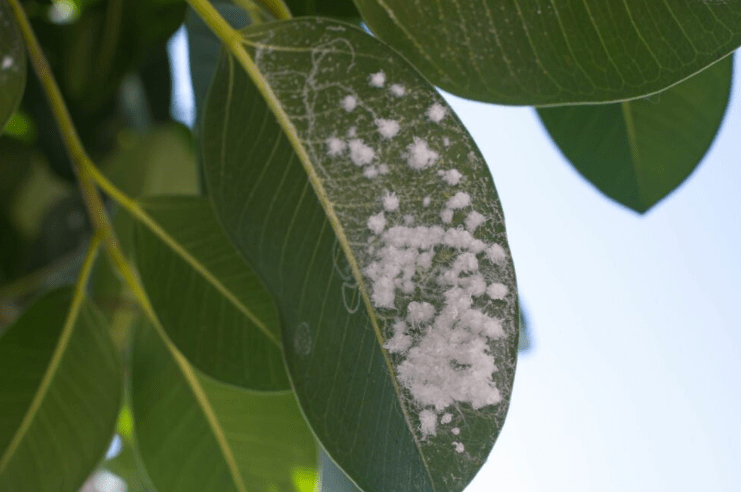
Repotting Best Practices:
Step-by-step guide to repotting a rubber tree with minimal stress.
Repotting a rubber tree can be a simple process if done with minimal stress. First, choose a new pot that is 2 inches larger in diameter than the current pot to allow for the plant to grow. Gently remove the rubber tree from its current pot, being careful not to damage the roots. If the roots are circling the root ball, gently tease them apart to encourage outward growth. Place a layer of fresh potting soil in the bottom of the new pot, then position the rubber tree in the center and fill in the sides with more soil. Water the plant thoroughly and place it in a location with indirect sunlight to allow it to acclimate to its new environment. It’s important to monitor the plant closely for the first few weeks to ensure it is adjusting well to the new pot. With these steps and minimal stress, your rubber tree will thrive in its new pot.
Fertilization Tips:
How to choose and apply the right fertilizer to support healthy growth.
Choosing the right fertilizer is essential to support healthy growth in your plants. When selecting a fertilizer, look for one that is specifically formulated for the type of plant you are growing, such as a high-nitrogen fertilizer for leafy plants or a balanced fertilizer for flowering plants. Follow the instructions on the fertilizer packaging for the correct application method and dosage. Before applying the fertilizer, make sure the soil is moist to prevent root burn. Apply the fertilizer evenly around the base of the plant and water it in thoroughly. It’s important to fertilize your plants regularly, but be careful not to over-fertilize as this can harm the plant. Additionally, consider using organic fertilizers to promote long-term soil health and reduce the risk of chemical build-up. By choosing and applying the right fertilizer, you can provide essential nutrients to your plants and support their healthy growth.
Preventative Care Tips
Regular Monitoring: Encourage regular checks for early signs of issues.
Regular monitoring of your plants is crucial for early detection of any issues that may arise. By regularly checking on your plants, you can catch any problems early on and take proactive measures to address them. Look for signs of pests, diseases, or nutrient deficiencies, and take action to resolve any issues promptly. By staying on top of your plant’s health, you can help them thrive and prevent any potential problems from escalating. Additionally, regular monitoring allows you to assess the effectiveness of your fertilization and watering practices, and make any necessary adjustments to ensure your plants are receiving the care they need. Overall, regular monitoring is an important part of preventative care for your plants and can contribute to their overall well-being and longevity.
Conclusion
In conclusion, the most common causes of rubber tree leaves falling off include overwatering, underwatering, inadequate light, and temperature fluctuations. To address these issues, make sure to water your rubber tree plant sparingly, provide it with adequate sunlight, and keep it in a consistent temperature environment. Additionally, consider repotting your plant if it has outgrown its current container. By addressing these common issues, you can help ensure the health and longevity of your rubber tree plant.
Frequently asked questions And Answer
There are a few common causes for rubber tree leaves falling off, including overwatering, underwatering, low humidity, and changes in light or temperature.
To prevent your rubber tree leaves from falling off, make sure to water it properly, keep it in a humid environment, and avoid drastic changes in light or temperature.
If you notice your rubber tree leaves falling off, try to identify the cause and address it accordingly. Adjust your watering schedule, improve humidity levels, and make sure the plant is in an appropriate environment.
In most cases, if you address the underlying issue causing the leaf drop, your rubber tree can recover and grow new leaves.
Rubber trees prefer to dry out slightly between waterings, so aim to water them when the top inch of soil is dry. Avoid overwatering, as this can lead to leaf drop.
Misting your rubber tree can help increase humidity, but it’s not the most effective method. Consider using a humidifier or placing a tray of water and pebbles near the plant to create a more consistent humid environment.
Rubber trees prefer bright, indirect light. Avoid placing them in direct sunlight, as this can lead to leaf burn and drop.
It is possible to propagate new rubber trees from fallen leaves, but it can be a bit challenging. It’s often more successful to propagate from stem cuttings or air layering.
